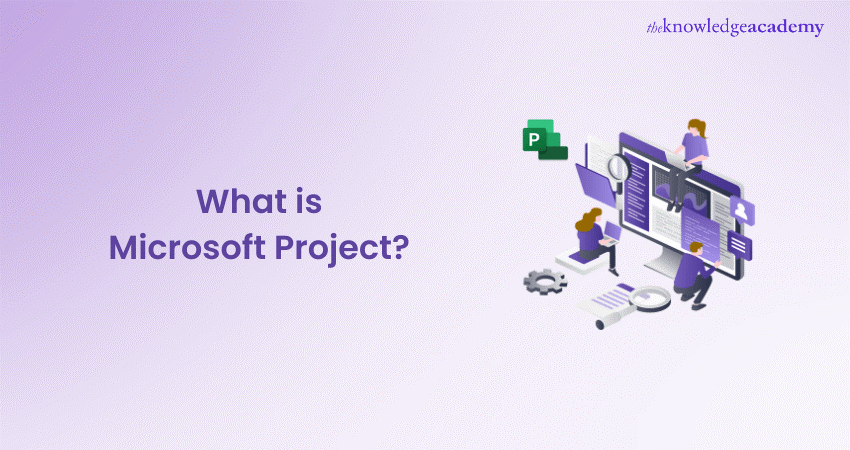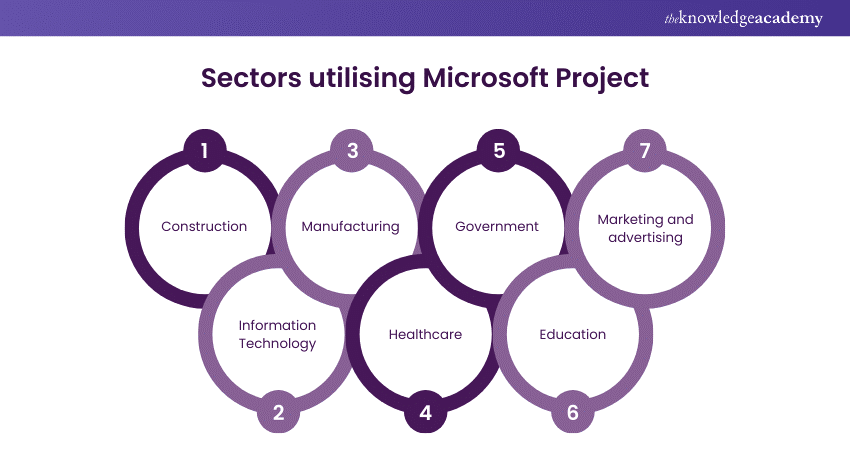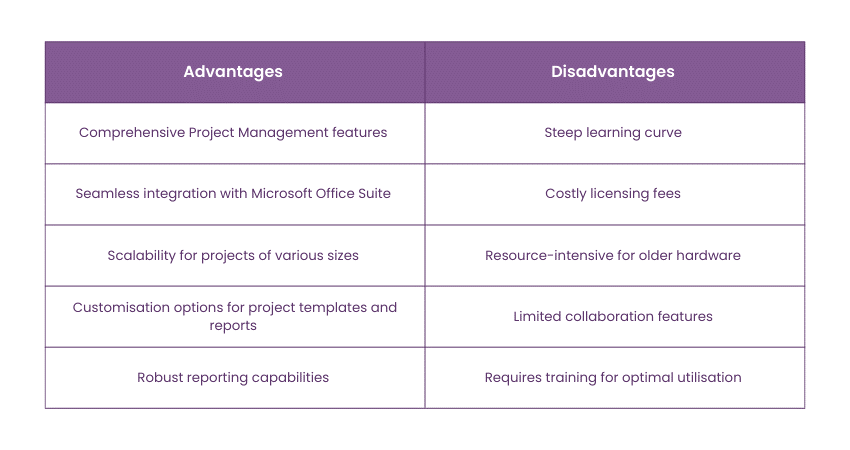We may not have the course you’re looking for. If you enquire or give us a call on +91 8037244591 and speak to our training experts, we may still be able to help with your training requirements.
Training Outcomes Within Your Budget!
We ensure quality, budget-alignment, and timely delivery by our expert instructors.

Effective project management allows organisations to achieve their goals efficiently. Given this context, the Microsoft Project acts as an effective tool designed to streamline project planning, execution, and tracking. Having an in-depth understanding of What is Microsoft Project is an invaluable asset for Project Managers and teams alike.
Microsoft Project is developed by the Microsoft Corporation, and is reportedly used by over 35806 companies around the world in 2024. In this blog, we will talk about the fundamental concepts of Microsoft Project. To give you a firm grasp, we will talk about how it works, its key features, common use cases across different industries, as well as the pros and cons of using the software.
By the end of this blog, you might get a solid foundation of What is Microsoft Project and be ready to leverage its capabilities to manage projects with ease and efficiency.
Table of Contents
1) What is Microsoft Project?
2) How does Microsoft Project work?
3) Microsoft Project features
4) Microsoft Project use cases
5) Pros and cons of Microsoft Project
6) Conclusion
What is Microsoft Project?
Microsoft Project is a comprehensive platform that enables users to initiate, oversee, and monitor projects from inception to conclusion. Through its multifaceted functionality, it facilitates the seamless execution of project workflows. By doing so, it ensures timely and successful project completion. The software's robust task-scheduling feature enables users to sequence project activities and allocate resources efficiently.
Furthermore, Microsoft Project empowers users with powerful reporting tools that facilitate real-time tracking of project progress and performance. By leveraging its comprehensive features and capabilities, organisations can streamline project workflows, improve collaboration, and confidently achieve their project goals.
How does Microsoft Project work?
Microsoft Project operates as a comprehensive project management solution, empowering users to oversee projects from inception to completion. Let's explore the key components of how Microsoft Project works:
Setting up a Project
Before initiating it, users must create a new project by specifying its parameters, e.g., starting date, duration and workload. This first step in planning the project must include setting up and executing the activities.
Defining tasks
Tasks represent the individual activities that should be completed to achieve project objectives. Users can define tasks, set durations, assign resources, and establish dependencies between tasks to create a comprehensive Microsoft Project Plan.
Creating a task schedule
The following step is to determine tasks and utilise Microsoft Project's scheduling tools to develop a task schedule. The software automatically produces task duration, scheduling, and Microsoft Project Critical Path calculations based on parameters predefined by the users. This phase allows users to easily visualise project timelines and keep track of their progress.
Unlock advanced features and become a proficient user with our Microsoft Project Courses - join us now!
Tracking progress
Microsoft Project enables real-time tracking of project progress, allowing users to monitor task completion, resource allocation, and project milestones. Progress tracking helps identify potential delays or issues early on, allowing for timely adjustments and mitigation strategies.
Generating reports
Microsoft Project offers robust reporting capabilities, allowing users to generate various project reports, such as Gantt Charts, resource allocation reports, and project summaries. These reports give valuable insights into project performance, resource utilisation, and overall project health.
Microsoft Project features
Understanding the array of features within Microsoft Project is essential for maximising its potential in Project Management. Let's explore the important features that make Microsoft Project a versatile tool for project planning and execution:
Role assignment features
Microsoft Project allows users to assign roles and responsibilities to team members, ensuring clarity and accountability within the project team. Role assignment features streamline communication and collaboration, facilitating smoother Project Execution.
Timelines
Timelines in Microsoft Projects provide a visual representation of project schedules, milestones, and deadlines. Timelines help stakeholders understand project timelines at a glance, facilitating effective communication and decision-making.
Gantt Charts
Gantt Charts are a staple feature of Microsoft Projects, offering a visual representation of project tasks, durations, and dependencies. Gantt Charts allow users to track progress, identify bottlenecks, and adjust schedules as needed.
Software integrations
Microsoft Project seamlessly integrates with other Microsoft Office applications, such as Excel, Word, and Outlook, as well as third-party tools like SharePoint and Power BI. These integrations enhance collaboration, data sharing, and reporting capabilities.
Dependencies
Microsoft Project allows users to define task dependencies, such as finish-to-start, start-to-start, finish-to-finish, and start-to-finish relationships. Dependencies help sequence tasks and ensure that project activities are completed in the correct order.
Budgeting
Microsoft Project includes budgeting and cost management features, allowing users to allocate resources, track expenses, and manage project budgets. Budgeting capabilities help ensure that projects stay within budget constraints and deliver value for stakeholders.
Microsoft Project use cases
Microsoft Project finds applications across various industries and sectors. Let's explore some of them in the following points:

1) Construction
In the construction industry, Microsoft Project is used to plan and manage construction projects, coordinate resources, and track progress against project timelines and budgets.
2) Information Technology
In the IT sector, Microsoft Project helps manage software development projects, IT infrastructure upgrades, and system implementations, ensuring timely delivery and efficient resource allocation.
3) Manufacturing
Manufacturing companies utilise Microsoft Project to schedule production activities, manage inventory levels, and optimise manufacturing processes for maximum efficiency and profitability.
4) Healthcare
In healthcare, Microsoft Project is used to plan and manage healthcare facility construction, medical equipment installations, and IT system upgrades, ensuring compliance with regulatory requirements and patient safety standards.
Master project planning, execution, and tracking - join our Microsoft Project Training!
5) Government
Government agencies leverage Microsoft Project to plan and execute public infrastructure projects, government initiatives, and policy implementation programs, ensuring transparency and accountability in project delivery.
6) Education
Educational institutions utilise Microsoft Project to plan and manage construction projects, campus expansions, and IT system upgrades, ensuring efficient resource allocation and timely project completion.
7) Marketing and advertising
In the marketing and advertising industry, Microsoft Project helps plan and execute marketing campaigns, product launches, and promotional events, ensuring alignment with marketing objectives and deadlines.
Pros and cons of Microsoft Project
Let's explore the pros and cons of Microsoft Project to help you assess its suitability for your Project Management requirements and preferences:

Pros of Microsoft Project
Microsoft Project highly streamlines Project Planning, execution, and tracking. Let's explore in detail the advantages of Microsoft Project:
a) Microsoft Project offers different features for project planning, scheduling, reporting, and resource management.
b) Seamless integration with other Microsoft Office applications, including Excel, Word, and Outlook.
c) It is a suitable tool for projects of different sizes and complexities, from small-scale initiatives to large-scale enterprise projects.
d) Allows users to customise project templates, views, and reports to suit their specific project needs and preferences.
Cons of Microsoft Project
Before diving into the drawbacks of Microsoft Project, it's crucial to acknowledge that no tool is without its limitations. Now, let's explore the cons of Microsoft Project:
a) Possesses a relatively steep learning curve because of its extensive feature set and complex interface. Training and familiarisation may be required to fully use the software's capabilities.
b) It is paid software, and licensing fees can be a significant investment for individuals or organisations.
c) Running Microsoft Project on older hardware or with limited system resources may result in sluggish performance or system lag.
d) Apart from having basic collaboration features, it may not provide the same level of real-time collaboration and communication as other dedicated project management platforms.
Conclusion
As a project management tool, Microsoft Project offers multiple features and capabilities for planning, executing, and tracking projects. By setting up projects and generating reports, it provides the needed tools to manage projects effectively. With proper knowledge of What is Microsoft Project, you can ensure achieving project objectives and delivering value to stakeholders.
Gain insights with our Microsoft Project Training Course and streamline your workflows to ensure timely project delivery success!
Frequently Asked Questions

Yes, Microsoft Project supports multiple users through its collaborative features. It allows team members to work on the same project simultaneously.

The longest task in a project is typically referred to as the critical path. The path mostly represents the sequence of tasks that determines the project's overall duration.

The Knowledge Academy takes global learning to new heights, offering over 30,000 online courses across 490+ locations in 220 countries. This expansive reach ensures accessibility and convenience for learners worldwide.
Alongside our diverse Online Course Catalogue, encompassing 17 major categories, we go the extra mile by providing a plethora of free educational Online Resources like News updates, Blogs, videos, webinars, and interview questions. Tailoring learning experiences further, professionals can maximise value with customisable Course Bundles of TKA.

The Knowledge Academy’s Knowledge Pass, a prepaid voucher, adds another layer of flexibility, allowing course bookings over a 12-month period. Join us on a journey where education knows no bounds.

The Knowledge Academy offers various Microsoft Project Trainings, including the Microsoft Project Course, Microsoft PowerPoint Training, and Microsoft Teams Training. These courses cater to different skill levels, providing comprehensive insights into the Competitive Intelligence Tools.
Our Office Applications Blogs cover a range of topics related to Microsoft Office, offering valuable resources, best practices, and industry insights. Whether you are a beginner or looking to advance your Office Application skills, The Knowledge Academy's diverse courses and informative blogs have got you covered.







 Top Rated Course
Top Rated Course




 If you wish to make any changes to your course, please
If you wish to make any changes to your course, please


